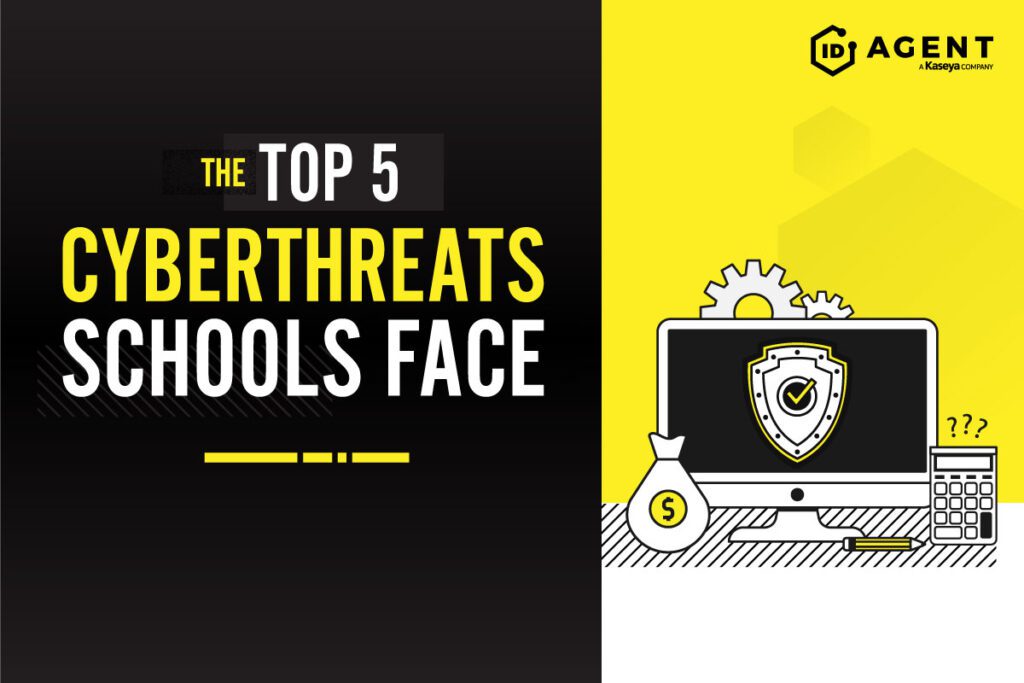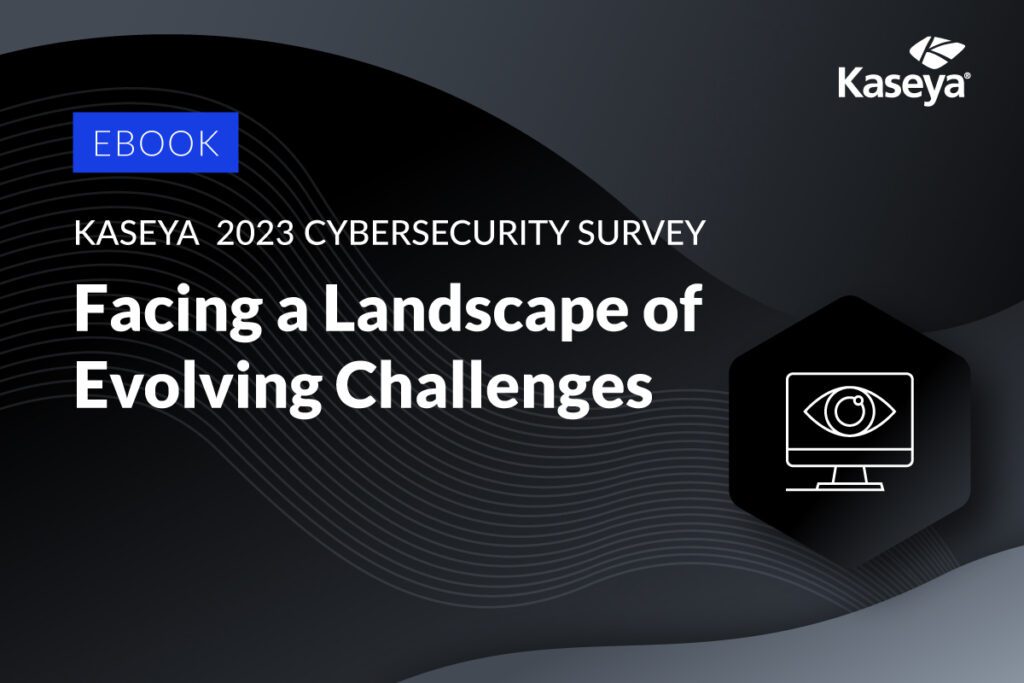10 Tips for Running a Successful Cybersecurity and Phishing Awareness Training Program

The Right Cybersecurity Awareness Training is a Game-Changer
The number of cyberthreats that businesses face is growing leaps and bounds every year. According to The Identity Theft Resource Center (ITRC), cyberattacks targeting small businesses reached a record three-year high in 2023. In an era where cyberthreats loom large and phishing attacks are more cunning than ever, the importance of a robust cybersecurity and phishing awareness training program cannot be overstated. Regular, quality training transforms employees from security risks into security assets. In this blog, we’ve highlighted ten tips that can help administrators run an effective and efficient cybersecurity and phishing awareness training program.

Learn about the top cyber threats K-12 schools face and how to mitigate them. DOWNLOAD INFOGRAPHIC>>
Lack of training is the key driver of cybersecurity issues
For our Kaseya Security Survey Report 2023, we asked IT professionals around the globe what the top three reasons behind their cybersecurity issues were. Lack of cybersecurity training topped the list, with more than half of respondents (53%) reporting that the lack of end-user or administrator training was a major reason behind their cybersecurity issues.
What are the top three root causes of your cybersecurity issues?
| Issue | Response |
| Lack of end-user cybersecurity training | 28% |
| Lack of defense solutions (antivirus) | 28% |
| Insufficient security support for different types of user devices | 26% |
| Lack of administrator cybersecurity training | 25% |
| Lack of executive buy-in for adopting security solutions | 22% |
| Lack of funding for IT security solutions | 21% |
| Lost or stolen employee credentials | 17% |
| Poor user practices/gullibility | 15% |
| Open Remote Desktop Protocol (RDP) access | 13% |
| Outdated security patches | 13% |
| Shadow IT | 11% |
| Weak passwords or access management | 10% |
| We have not experienced a cybersecurity incident | 7% |
Source: Kaseya Security Survey Report 2023

Every business faces insider risk, from employee mistakes to malicious acts. Learn how to mitigate it. DOWNLOAD EBOOK>>
10 Tips for administrating a successful cybersecurity and phishing awareness training program
Establishing a strong culture of security in the organization can help businesses avoid almost three-quarters of cyber threats. Cybersecurity awareness training is the foundation that culture is built on. To ensure the effectiveness of your training initiative consider the following ten tips to run a successful cybersecurity and phishing awareness training program:
1. Tailor content to your audience: Understanding your employees’ roles, responsibilities and familiarity with cybersecurity concepts is key. Tailor your training content to resonate with their specific needs and knowledge levels. Look for a security awareness training solution that provides a broad library of content. The right solution will also make it easy for an administrator to split users into training groups and run them through the modules that will educate them about the threats that are most relevant to their role.
2. Choose interactive learning modules: Engage your employees with interactive learning modules. Incorporate simulations, quizzes and real-life scenarios to make the training memorable and practical. People remember stories much more easily than they remember facts and figures, so use storytelling to your advantage.

See the challenges companies face & how they’re overcoming them in our Kaseya Security Survey Report 2023 DOWNLOAD IT>>
3. Hold regular updates and refreshers: Cyberthreats are ever-evolving. Keep your training content current by regularly updating it to reflect the latest cybersecurity trends and phishing tactics. Conduct periodic refresher courses to reinforce key concepts. Every employee, from the interns to the C-suite, should have to complete security and phishing awareness training modules at least quarterly.
4. Use realistic phishing simulations: Provide hands-on experience by implementing realistic phishing simulations. This allows employees to recognize and respond to phishing attempts in a controlled environment, enhancing their real-world readiness. Some security awareness training solutions offer a wide variety of customization options for phishing resistance training, giving trainers the tools they need to educate employees about the real, industry-specific phishing threats they face every day.
5. Get leadership buy-in and participation: Obtain support from top leadership to emphasize the importance of cybersecurity. When leaders actively participate in training programs, it sends a strong message about the organization’s commitment to security. No one should be exempt from completing training courses. Getting leadership buy-in also ensures that the work administrators do with a security awareness training program serves as a foundation for a strong cybersecurity culture and doesn’t just fulfill a check box.

Learn about the challenges that MSPs face in 2024 in Datto’s State of the MSP 2024 Report. GET YOUR COPY>>
6. Clear reporting and feedback mechanisms: Establish clear channels for reporting potential security incidents or phishing attempts. Encourage employees to report suspicious emails promptly and provide feedback to reinforce positive behaviors. It is critical for employees to understand that they won’t be punished for reporting security issues or mistakes to encourage accurate reporting.
7. Promote a culture of vigilance: Foster a cybersecurity-conscious culture within the organization. Encourage open communication about potential threats, promote responsible online behavior and celebrate security-conscious actions. During training, remind employees early and often that they are encouraged to report suspicious activity even if they’re unsure that it is an actual threat.
8. Utilize multichannel communication: Utilize various communication channels to reinforce training messages. Emails, posters, newsletters and internal forums can help maintain awareness and keep cybersecurity at the forefront of employees’ minds. Make it easy for employees to feel confident about their ability to find security information, get guidance about security concerns and report potential security issues.

Follow the path to see how Managed SOC heroically defends businesses from cyberattacks. GET INFOGRAPHIC>>
9. Measure and analyze results: Implement metrics to measure the success of your training program. Track improvements in identifying phishing attempts, monitor reported incidents and analyze the overall cybersecurity posture of the organization. Analysis also ensures that stakeholders are getting a clear picture of the improvements that security awareness training for employees has produced. A security awareness training platform that generates clear, easy-to-understand reports about the progress of training is a key player in justifying the training budget.
10. Strive for continuous improvement: Treat your cybersecurity and phishing awareness training program as an evolving process. Regularly evaluate its effectiveness, gather feedback from participants and make adjustments to address emerging threats and challenges. Keep an eye on how employees’ use of technology has changed, and incorporate training around that into your program. For example, some employees may need more training in remote work-related threats. Don’t forget to update your training program to account for new threats.
Cybersecurity awareness training is a highly effective security move that any business can make without a big upfront investment. Plus, automation makes it easy for a lean IT team or solo IT professional to administrate training. By implementing these tips, organizations can build a resilient workforce capable of identifying and mitigating cybersecurity threats effectively. A well-executed training program not only strengthens the organization’s security posture but also empowers employees to play an active role in safeguarding sensitive information.

In The Educator’s Guide to Cybersecurity, see the cyber threats that schools face & how to mitigate them. DOWNLOAD IT>>
Mitigating cyber risk is easy with Kaseya’s Security Suite
As we embark on a new year, these ten cybersecurity resolutions serve as a roadmap to fortify any organization’s defenses against an ever-changing threat landscape. By prioritizing security awareness training, stepping up assessments like penetration testing, adopting advanced technologies and staying vigilant, IT professionals can create a robust cybersecurity posture that safeguards their employer’s or customers’ digital assets and protects against emerging threats. Here’s to a secure and resilient 2024!
Kaseya’s Security Suite has the tools that MSPs and IT professionals need to mitigate cyber risk effectively and affordably, featuring automated and AI-driven features that make IT professionals’ lives easier.
BullPhish ID — This effective, automated security awareness training and phishing simulation solution provides critical training that improves compliance, prevents employee mistakes and reduces a company’s risk of being hit by a cyberattack.
Dark Web ID — Our award-winning dark web monitoring solution is the channel leader for a good reason: it provides the greatest amount of protection around with 24/7/365 human and machine-powered monitoring of business and personal credentials, including domains, IP addresses and email addresses.
Graphus — Automated email security is a cutting-edge solution that puts three layers of AI-powered protection between employees and phishing messages. It works equally well as a standalone email security solution or supercharges your Microsoft 365 and Google Workspace email security.
Kaseya Managed SOC powered by RocketCyber — Our managed cybersecurity detection and response solution is backed by a world-class security operations center that detects malicious and suspicious activity across three critical attack vectors: endpoint, network and cloud.
Datto EDR — Detect and respond to advanced threats with built-in continuous endpoint monitoring and behavioral analysis to deliver comprehensive endpoint defense (something that many cyber insurance companies require).
Vonahi Penetration Testing – How sturdy are your cyber defenses? Do you have dangerous vulnerabilities? Find out with vPenTest, a SaaS platform that makes getting the best network penetration test easy and affordable for internal IT teams.
Learn more about our security products, or better yet, take the next step and book a demo today!

Our Partners typically realize ROI in 30 days or less. Contact us today to learn why 3,850 MSPs in 30+ countries choose to Partner with ID Agent!
Check out an on-demand video demo of BullPhish ID or Dark Web ID WATCH NOW>>
See Graphus in action in an on-demand video demo WATCH NOW>>
Book your demo of Dark Web ID, BullPhish ID, RocketCyber or Graphus now!